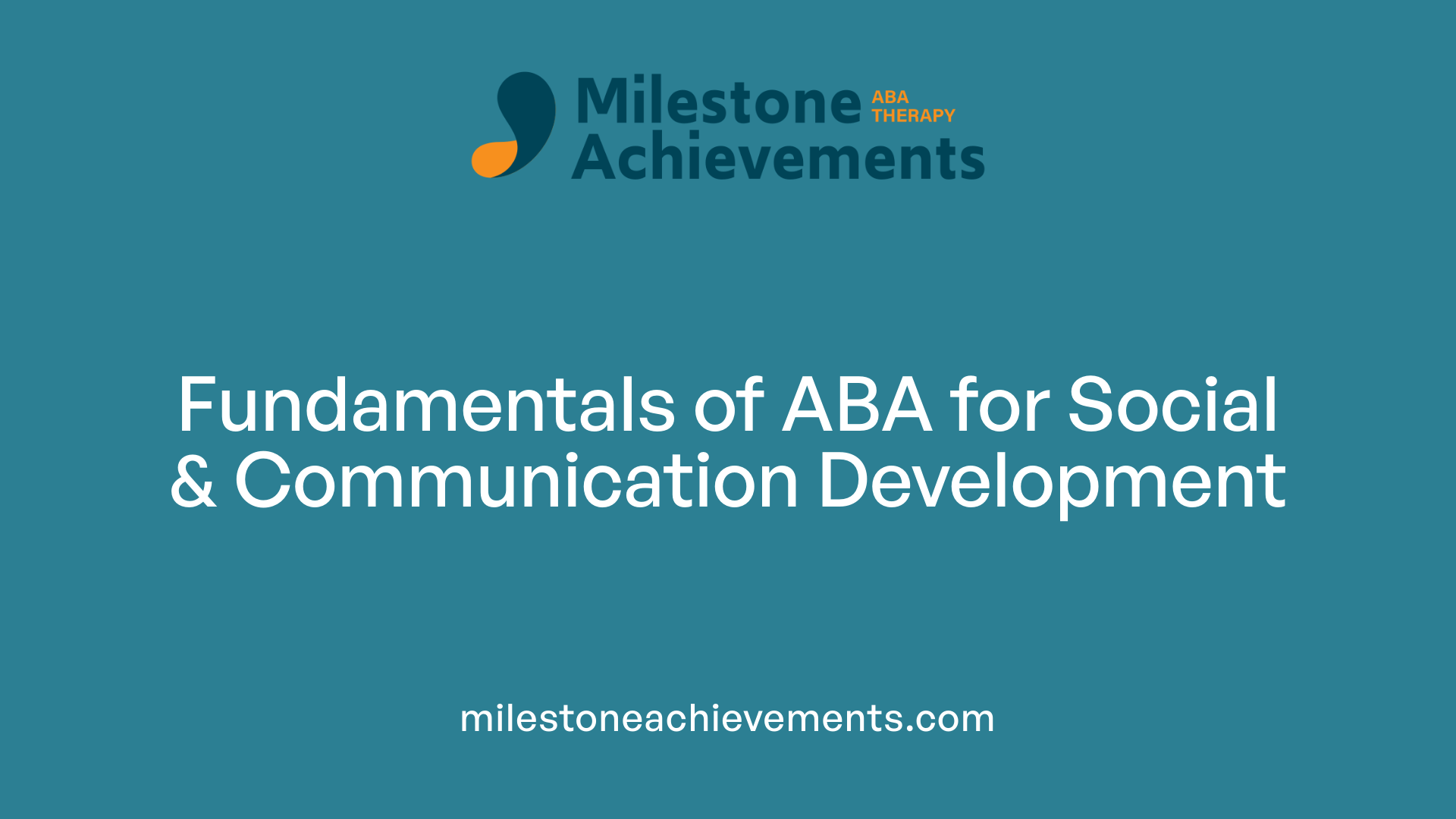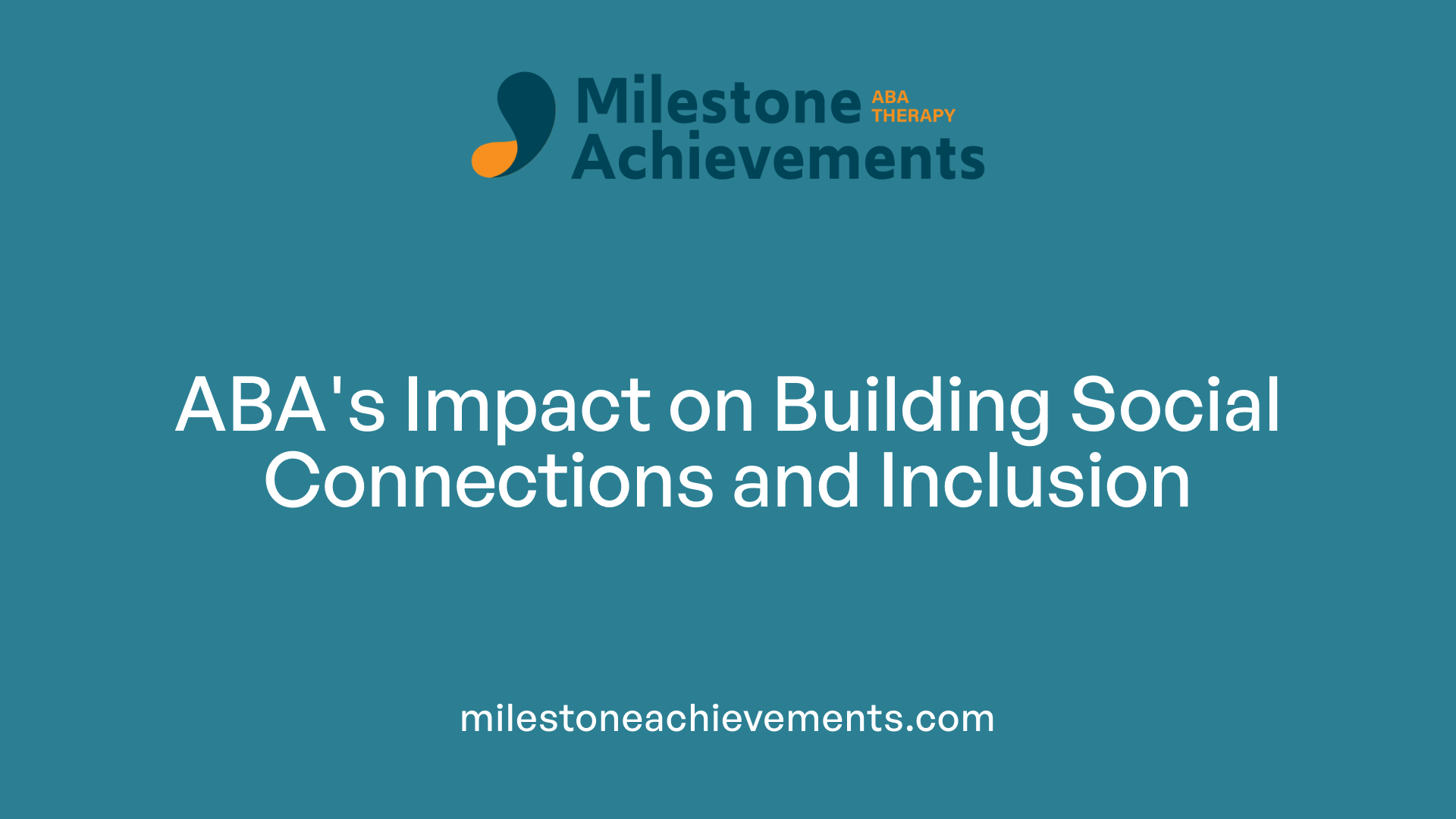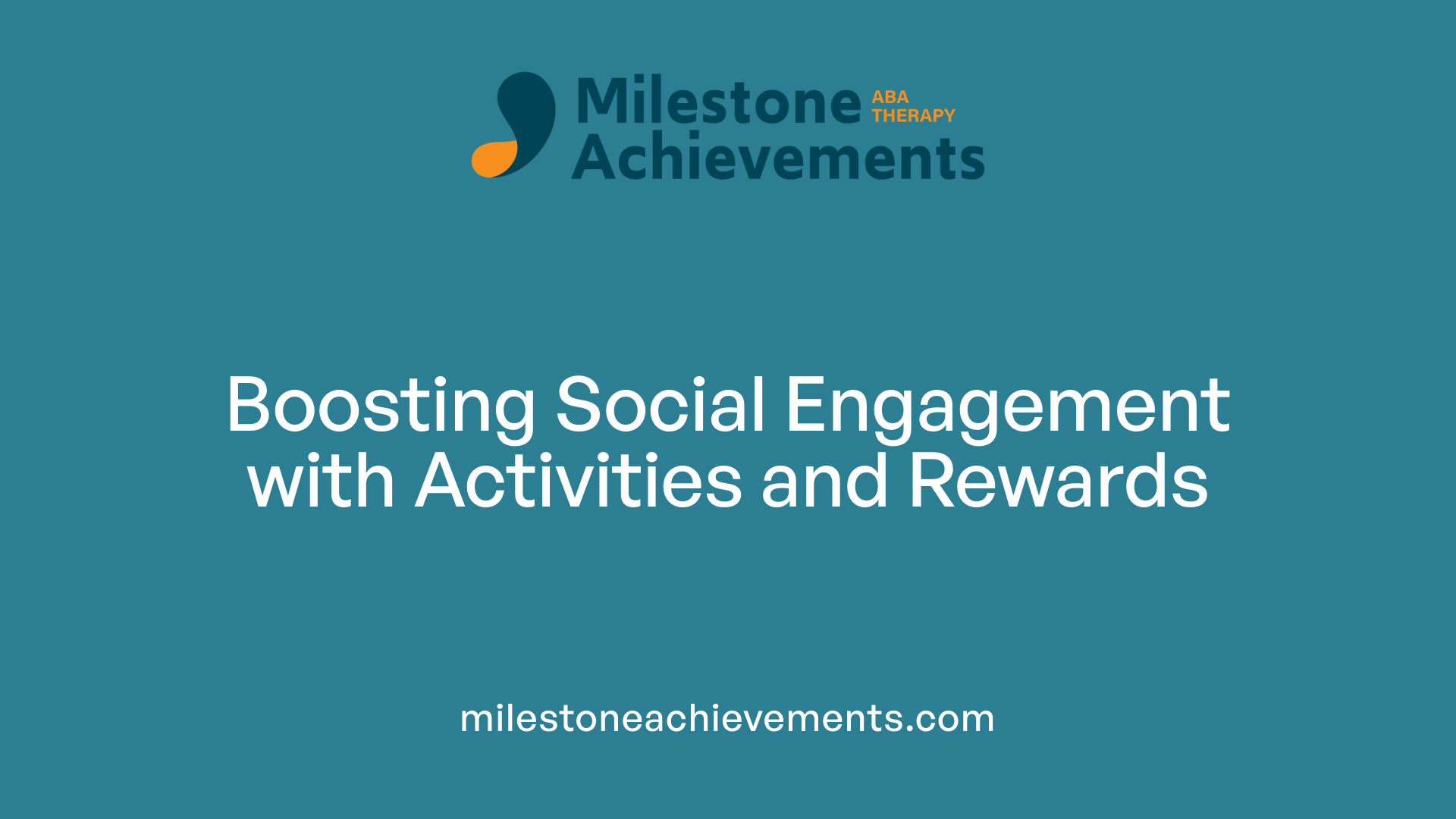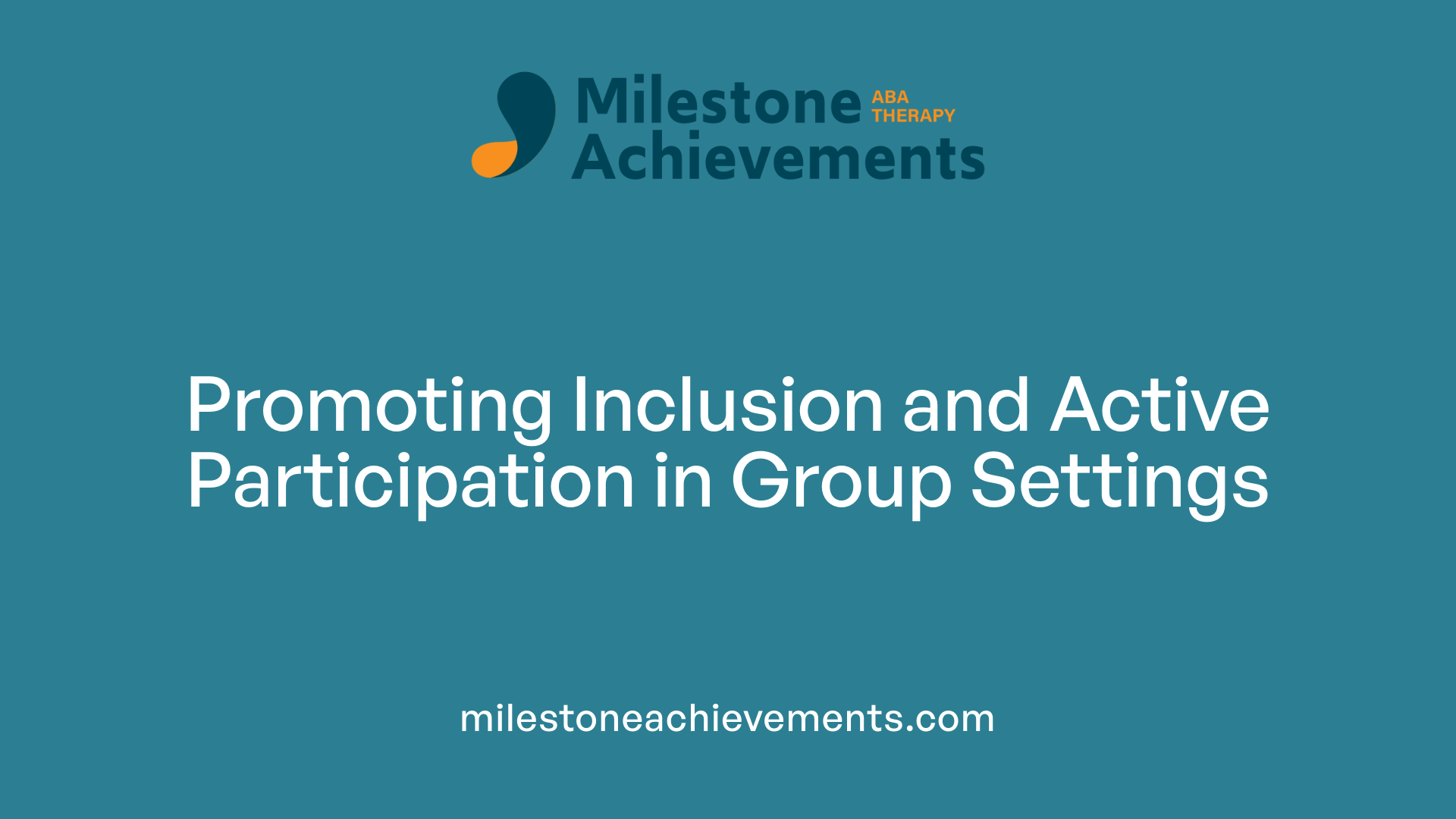
How ABA Therapy Encourages Participation in Group Discussions
Fostering Social Engagement Through ABA Strategies
Unlocking Social Skills in Children with Autism
Applied Behavior Analysis (ABA) therapy is a scientifically validated approach designed to improve social, communication, and daily living skills in children with autism spectrum disorder (ASD). A key goal of ABA is to enhance participation in group discussions by systematically teaching social cues, verbal and non-verbal communication, and interaction skills. This article explores how ABA employs evidence-based techniques, structured activities, and personalized programs to foster active social engagement and meaningful participation in group settings.
Core Principles of ABA in Building Social and Communication Skills

What are the principles behind ABA therapy's role in developing communication and social skills?
Applied Behavior Analysis (ABA) is based on the scientific principles of behaviorism. It uses reinforcement strategies to encourage positive behaviors, helping individuals develop essential communication and social skills.
ABA therapy involves breaking down complex social skills into smaller, manageable steps. This structured approach allows individuals to learn gradually, building confidence and competence.
Therapists utilize methods like modeling, prompting, and rehearsal to teach new behaviors. For example, a child might watch a peer greet someone, be guided through the steps, and practice the behavior repeatedly.
Visual supports such as choice boards or social stories play a vital role in aiding understanding and expression of preferences. Natural environment teaching encourages practicing skills in everyday settings, making learning more relevant.
Group activities and peer interactions are integrated to promote socialization, sharing, and understanding social cues. These real-world practice opportunities facilitate skill generalization.
Programs are carefully tailored to each child through assessments that identify their unique strengths and challenges. Goals are developed collaboratively with families and therapists, ensuring motivation remains high.
Evidence-based techniques like discrete trial training, task analysis, and social stories are central to ABA. These methods help develop communication skills like requesting, commenting, and understanding facial expressions.
In summary, ABA employs a combination of reinforcement, structured teaching, visual supports, and peer engagement to systematically help children acquire social and communication skills, fostering greater independence and community participation.
Techniques That Enhance Social Engagement and Participation
How does ABA therapy support social interaction and communication among children with autism?
ABA therapy plays a vital role in improving social skills and communication for children with autism by offering tailored, structured interventions. These programs focus on teaching children essential social behaviors through a variety of proven techniques.
One of the primary strategies is the use of modeling and role-playing. These methods allow children to observe and practice social interactions in a controlled, safe environment. For example, therapists may demonstrate how to greet others or make eye contact, then guide children as they try these skills themselves. Social stories are also employed to explain social situations and expectations in an understandable way.
In addition to structured activities, ABA emphasizes breaking down complex social skills into small, achievable steps. This ensures children can gradually master behaviors like turn-taking, responding to social cues, and initiating conversations.
Positive reinforcement, such as praise, tokens, or preferred activities, encourages children to repeat desirable behaviors. Prompts are used to initiate actions, and fading procedures gradually lessen prompts to foster independence.
Visual supports, including choice boards and visual schedules, help children understand social expectations and the flow of interactions, reducing anxiety and confusion.
Group sessions and peer interactions are integral to ABA, providing real-world practice of social skills. These activities help children generalize learned behaviors to natural settings like school and community.
By systematically teaching and reinforcing skills, ABA therapy boosts social engagement, emotional regulation, and the ability to form peer relationships. Collaboration with families and educators further ensures these skills are supported across different environments.
| Technique | Description | Examples |
|---|---|---|
| Task Analysis | Breaking down social skills into small steps | Greeting, eye contact |
| Discrete Trial Training | Repetitive structured teaching sessions | Asking for help |
| Naturalistic Teaching | Learning within natural settings | Playdates, community outings |
| Modeling & Role-Playing | Demonstrating and practicing skills | Sharing toys, taking turns |
| Visual Supports | Visual cues to clarify expectations | Choice boards, social stories |
| Reinforcement & Fading | Encouraging behaviors with rewards | Praise, tokens |
| Peer & Group Activities | Learning through social interaction | Group games, collaborative tasks |
This evidence-based approach results in meaningful improvements in children’s social participation, contributing to their overall development and inclusion in their communities.
Impact of ABA Therapy on Social Participation and Inclusion

What is the impact of ABA therapy on social participation for individuals on the autism spectrum?
ABA therapy plays a substantial role in enhancing social participation among individuals with autism. It systematically teaches essential social skills, such as making eye contact, taking turns, initiating conversations, and responding to social cues. Through structured methods like social skills groups, social stories, and natural environment teaching, ABA encourages children to practice these skills in real-life settings, fostering confidence and independence.
In group activities, children learn to ask for toys, join games, and engage in collaborative play, which helps them build meaningful relationships with peers. These interventions promote social reciprocity and emotional regulation, enabling improved interactions in diverse social environments.
Extensive research supports these benefits. Multiple studies illustrate significant improvements in communication and social skills, with large effect sizes indicating that these gains are meaningful and lasting. For example, data confirm that ABA helps reduce social isolation by encouraging participation in community activities, recreational classes, and group discussions.
Ongoing assessment is central to ABA, ensuring that learned skills generalize across settings like home, school, and community. Adjustments in therapy tailor the approach to each individual's evolving needs. Ultimately, ABA therapy contributes to greater social inclusion, helping individuals with autism develop trust, form relationships, and lead more engaged, socially connected lives.
This comprehensive approach underscores ABA’s effectiveness not just in altering behaviors but also in fostering social bonds and societal participation—crucial for a fulfilling and independent life.
Promoting Social Engagement through Activities and Reinforcements

What techniques does ABA therapy use to enhance social engagement?
ABA therapy employs a mix of proven strategies to improve social skills and foster meaningful interactions. One fundamental method involves breaking down complex social behaviors into smaller, manageable components using task analysis. This step-by-step approach allows children to master individual skills like greeting others or sharing.
Modeling, role-playing, and rehearsing are central to teaching social cues. Therapists and peers demonstrate appropriate behaviors through modeling, while children practice these skills in safe, supportive environments. Role-playing scenarios help children experience real-world social interactions, building confidence and competence.
Positive reinforcement plays a crucial role in encouraging engagement. Rewards such as praise, tokens, or access to preferred activities motivate children to participate in social behaviors repeatedly. These reinforcements are tailored to each child's preferences to maximize motivation.
Visual supports further aid understanding and recall of social expectations. Tools like checklists, visual storyboards, and conversation flowcharts guide children through social interactions, helping them recognize cues and respond appropriately.
Involving peers and integrating community outings broadens social opportunities. Group sessions facilitate peer interactions, where children learn social rules through guided activities. Outside the therapy setting, community visits such as parks, recreational classes, or volunteering promote real-life social practice, leading to more natural and lasting social skills development.
Together, these methods create a comprehensive framework that supports children with autism in building social confidence, making meaningful connections, and engaging actively in their communities.
Shared Control, Play, and Their Role in Developing Social Skills

How does ABA therapy employ shared control and play to develop social skills?
ABA therapy leverages shared control and play to support social development by involving children in meaningful choices and interactive activities. When children are given opportunities to select games or activities, they experience a sense of ownership and motivation to participate. This approach encourages motivation, cooperation, and turn-taking, which are foundational for social interactions.
Structured play activities, such as role-playing, modeling, and peer interactions, are integral components of ABA therapy. These activities allow children to observe exemplary social behaviors, practice social cues, and engage with peers in a natural setting. For example, children might practice greeting others, sharing toys, or asking for help during guided play sessions.
Visual supports like choice boards or social scripts clarify expectations and facilitate understanding. Positive reinforcement—such as praise or tokens—encourages children to repeat desirable behaviors, strengthening social habits over time.
Using play-based methods makes learning enjoyable and relevant to everyday situations. Children learn through natural interactions, making it easier to transfer skills across different environments.
Overall, ABA therapy's emphasis on shared control and play creates a collaborative learning atmosphere. It fosters independence, improves communication, and encourages children to build and maintain peer relationships, leading to more active and meaningful social participation.
Facilitating Participation in Group Discussions and Inclusion Strategies

How does ABA therapy promote participation in group discussions?
ABA therapy enhances the ability of individuals with autism to actively participate in group discussions through various targeted techniques. It begins with teaching fundamental social communication skills, such as initiating conversations, responding appropriately to others, and understanding social cues like body language and facial expressions.
Structured activities like role-playing, social stories, and modeling are central to this process. These methods allow children to practice interactions in a controlled environment, making the skills more familiar and easier to use in real-world situations. Positive reinforcement, such as praise, tokens, or access to preferred activities, encourages children to repeat desired behaviors and develop confidence.
Therapists customize goals based on thorough assessments of each child's strengths and challenges. This personalized approach ensures that important skills—like maintaining eye contact, turn-taking, and recognizing social signals—are systematically introduced and reinforced.
Group ABA sessions foster a safe space for children to practice social skills with peers, promoting cooperation, sharing, and emotional bonding. Over time, these experiences help reduce social anxiety and foster the confidence necessary to engage meaningfully in group discussions.
By combining skill-building with supportive environments and reinforcement strategies, ABA therapy helps individuals with autism develop the social competence needed for successful participation in group interactions, enhancing their inclusion and societal engagement.
Building Social Confidence for Life
ABA therapy offers a comprehensive, individualized approach to developing social skills that directly encourage participation in group discussions. Through structured interventions, modeling, positive reinforcement, and play-based strategies, children with autism learn to initiate, respond, and sustain social interactions. Emphasizing generalization across environments, involving families and communities, and fostering an inclusive atmosphere, ABA empowers individuals to confidently engage in social and group activities, thereby enhancing their overall quality of life and social integration.
References
- Benefits of ABA Therapy for Children with Autism
- Autism Acceptance Month: How ABA Therapy Promotes Inclusion
- Why is ABA Therapy Important for Autism Treatment?
- How to Achieve Shared Control in ABA Therapy: A Step-by-Step Guide
- Creating a Safe Space for ABA Therapy Learning
- Understanding the Role of Play in ABA Therapy
- The effectiveness of applied behavior analysis program training on ...
- Group ABA Therapy: Bright Futures for Autistic Children


Partner with us on your child's journey
Milestone Achievements offers evidence-based ABA therapy to help children with autism reach their full potential. Together we’ll set meaningful goals and celebrate progress every step of the way.
Start ABA Services Today


